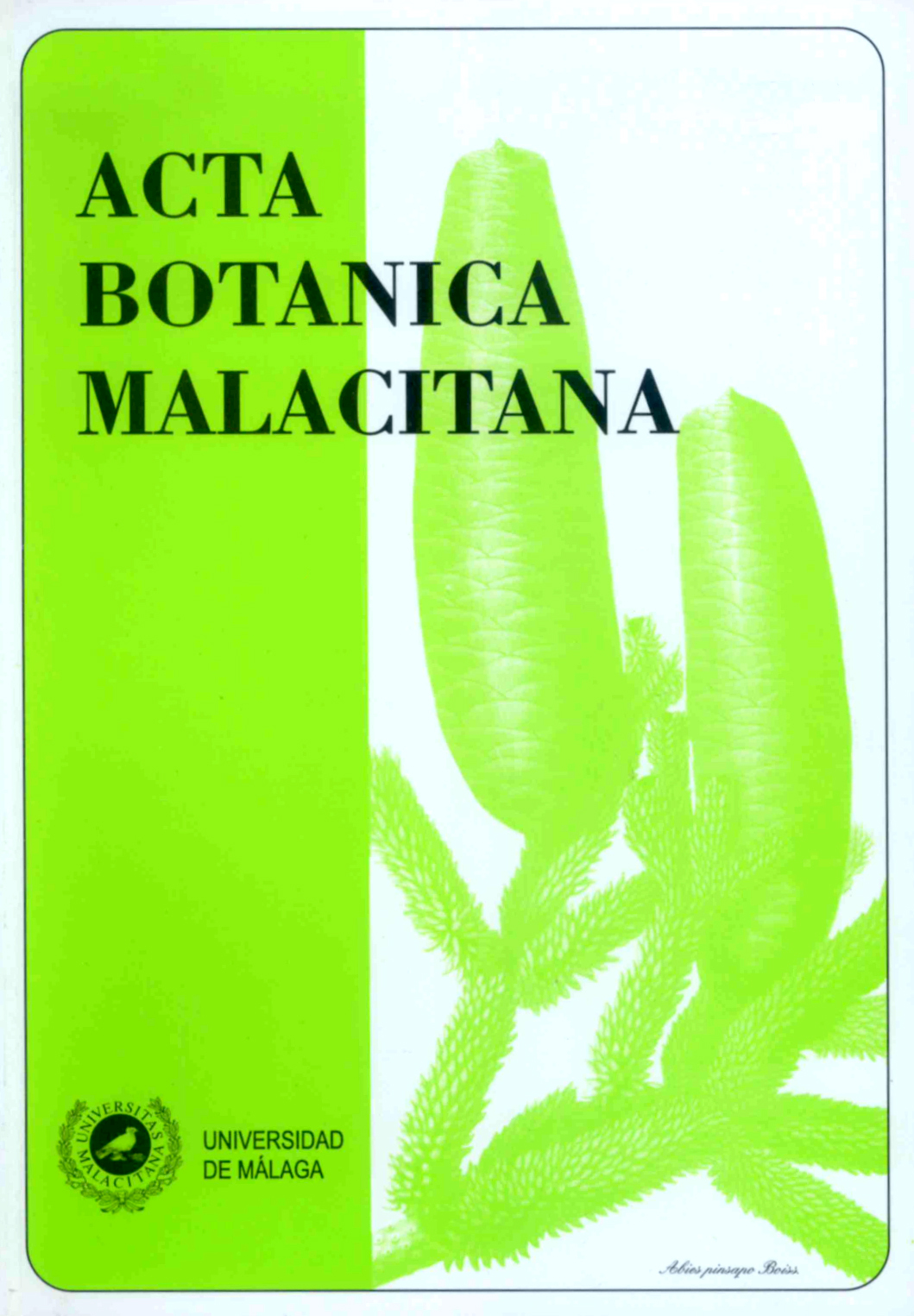Nuevos datos sobre la floración, fructificación y germinación de fanerógamas marinas en Andalucía.
DOI:
https://doi.org/10.24310/abm.v31i31.7120Abstract
RESUMEN. Nuevos datos sobre la floración, fructificación y germinación de fanerógamas marinas en Andalucía. Se aportan todos los datos conocidos sobre las floraciones y fructificaciones de las distintas fanerógamas marinas presentes en las provincias de Almería y Granada. Se presentan datos sobre las floraciones de Posidonia oceanica (L.) Delile detectadas en la provincia de Almería en los últimos años, y un caso de floración en la provincia de Granada, así como las fructificaciones y frutos maduros de esta especie en tres años consecutivos (2001/02, 2002/03 y 2003/04), lo que nunca antes se había observado en las costas andaluzas. Se estudia la evolución del tamaño de los frutos a lo largo del desarrollo en P. oceanica, así como la presencia de los frutos en las playas, el número de frutos por infrutescencia, cuántos aparecen con dehiscencia, y el porcentaje de frutos parcialmente o totalmente depredados. Se detecta en Almería (y por primera vez en Andalucía) la germinación natural de semillas de P. oceanica y se estudia el desarrollo de las plántulas en acuario, se obtienen medidas precisas de los frutos y sus semillas, y se comparan con los de otros puntos del Mediterráneo. Se aportan también datos sobre las floraciones y fructificaciones de Cymodocea nodosa (Ucria) Ascher. en Almería; sobre la fructificación de Zostera marina L. en Almería, Granada y también en Málaga; sobre la floración de Zostera noltii Horn. en Almería; y sobre la floración y fructificación de Ruppia maritima L. var. maritima en lagunas litorales y salinas de Almería.
Palabras clave. Floración, fructificación, germinación, fanerógamas marinas, S España, Posidonia, Cymodocea, Zostera, Ruppia
ABSTRACT. New data on flowering, fruiting and germination of marine phanerogams in Andalusia. All the available data on flowering and fruiting of the different seagrasses species from Almería and Granada are presented. Data on flowering of Posidonia oceanica (L.) Delile from the last years in Almería and one event from Granada are showed, and the exceptional fruiting events (with mature fruits) in three consecutive years in Almería (2001/02, 2002/03 y 2003/04) are confirmed, where never before was observed mature fruits. The evolution of fruit size during development in P. oceanica, the number of fruits/infrutescence, the number of fruits with dehiscence, and the average of fruits partial o totally predated, are studied. The natural germination of Posidonia oceanica is detected in Almería (and for the first time in Andalusia), and seedling development is studied in aquarium. Measurements of fruits and seeds of P. oceanica from Almería are taken and compared with other Mediterranean localities. Data on flowering and fruiting of Cymodocea nodosa (Ucria) Ascher. from Almería, of Zostera marina L. from Almería, Granada (and also Málaga), of Zostera noltii Horn. from Almería, and of Ruppia maritima L. var. maritima from littoral lagoons from Almería, are also presented.
Key words. Flowering, fruiting, germination, seagrasses, S Spain, Posidonia, Cymodocea, Zostera, Ruppia
Downloads
Metrics
Downloads
Published
How to Cite
Issue
Section
License
All information related to the licensing of published works in Acta Botanica Malacitana and copyright can be found in our Editorial Policy.







1.png)
